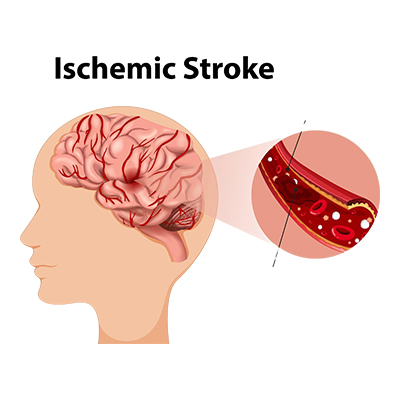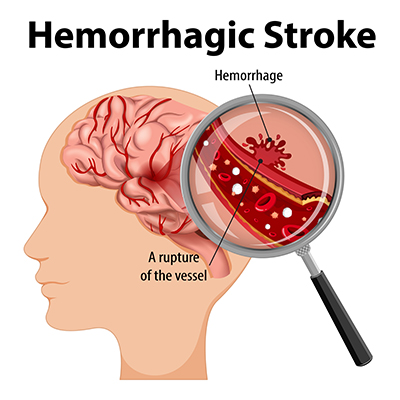The terms “blood clot” and “stroke” are often used interchangeably, yet they refer to different conditions. While they are closely related, particularly when discussing stroke types involving blood clots, understanding their distinctions is crucial. Blood clots can trigger strokes, but not all strokes are caused by blood clots. Distinguishing between the two is essential for effective treatment and prevention. In this blog, we’ll explore the differences between blood clots and strokes, including causes, symptoms, and their impact on health, to help you recognize and respond to these medical events effectively.
Understanding Blood Clots: What Are They?
A blood clot is a clump of blood that has changed from a liquid to a gel-like state. Blood clots are part of the body’s natural defense mechanism, often forming in response to cuts or injuries to stop bleeding. However, when blood clots form inappropriately within blood vessels, they can lead to severe complications.
There are two primary types of problematic blood clots:
- Thrombus: This type of clot forms in a blood vessel and remains stationary. Thrombi can occur in veins or arteries; however, when they form in arteries that supply blood to the brain, they pose a risk for stroke.
- Embolus: An embolus is a clot that has traveled from one part of the body to another. If an embolus reaches the brain and blocks blood flow, it can cause an embolic stroke.
What is a Stroke?
A stroke occurs when blood flow to a part of the brain is interrupted or reduced, preventing brain tissue from receiving oxygen and nutrients. Within minutes, brain cells begin to die. Strokes can happen for different reasons, and understanding these reasons is essential in identifying the differences between blood clots and strokes.
There are three primary types of strokes:
Ischemic Stroke: This is the most common type, occurring when a blood clot obstructs blood flow to the brain. Most ischemic strokes result from blood clots or plaque that travels to the brain’s blood vessels, leading to a blockage.


Hemorrhagic Stroke: A hemorrhagic stroke happens when a blood vessel in the brain bursts, causing bleeding in or around the brain tissue. Unlike ischemic strokes, hemorrhagic strokes are not caused by blood clots but rather by a ruptured blood vessel, often due to high blood pressure or aneurysms.
Transient Ischemic Attack (TIA): Often called a “mini-stroke,” a TIA is caused by a temporary blood clot that briefly blocks blood flow to the brain. While TIAs don’t typically cause permanent damage, they’re a serious warning sign of a future, potentially more severe stroke
Key Differences Between Blood Clots and Stroke
While blood clots and strokes are linked, they are distinct conditions that require different approaches to prevention and treatment.
- Cause: A blood clot within the circulatory system is essentially the precursor to an ischemic stroke if it occurs in or travels to the brain. A stroke, however, results from blocked or burst blood vessels in the brain. Any external trauma on the head can result in blood clot formation within the brain parenchyma (contusion), on the surface of the brain (subdural hematoma), between the folds of the brain (subarachnoid hemorrhage) or between the outer covering of the brain and skull (extradural hematoma).
- Location: Blood clots can form in any part of the circulatory system. When they occur in arteries leading to the brain, they increase the risk of a stroke. A stroke, by contrast, is specific to the brain. Blood clots can also accumulate within the brain tissue (parenchymal hematoma) or on the surface of brain tissue (subdural and epidural hematomas). Blood clots in the brain may clog the high pressure system (arterial stroke) or the low pressure system (venous thrombosis).
- Symptoms: Blood clots elsewhere in the body may cause pain, swelling, or discoloration, especially in cases of deep vein thrombosis (DVT) in the legs. Strokes, however, have distinct symptoms including sudden numbness or weakness, confusion, difficulty speaking, trouble seeing, sudden onset severe headache, imbalance or gradual decline in the level of alertness.
- Treatment Approach: Blood clots are treated depending on their location. Clots in the legs, for instance, may be managed with blood thinners or clot-dissolving drugs. In contrast, strokes require rapid intervention to restore blood flow to the brain, often through medication or open surgical or endovascular procedures.
- Outcomes and Long-term Effects: Blood clots within or outside the brain tissue may mimic symptoms of stroke. The outcome and long term effects depend on the size of blood clot, rate of expansion (if any) of blood clot and time taken to intervene.
Symptoms of Blood Clots
Blood clots can cause different symptoms based on their location:
- Legs (Deep Vein Thrombosis): Pain, swelling, redness, and warmth in the leg.
- Lungs (Pulmonary Embolism): Sudden shortness of breath, chest pain, rapid pulse, and coughing up blood.
- Brain (Potential Stroke): Sudden weakness, confusion, severe headache, dizziness, and vision changes.
Knowing these differences allows individuals to seek prompt medical attention for a suspected blood clot or stroke, as timely intervention can be life-saving.
Preventing Blood Clots and Strokes
While certain risk factors like age and family history are out of our control, there are several ways to reduce the risk of blood clots and strokes:
- Stay Active: Physical activity encourages healthy blood circulation, helping to reduce the risk of blood clot formation.
- Manage Blood Pressure: High blood pressure is a leading cause of both ischemic and hemorrhagic strokes. Regular monitoring and management are essential for prevention.
- Avoid Smoking: Smoking damages blood vessels, increasing the risk of clot formation and stroke.
- Monitor Cholesterol Levels: High cholesterol can lead to plaque buildup in arteries, increasing the risk of clots.
- Control of Diabetes Mellitus
- Stay Hydrated: Proper hydration helps maintain blood flow and reduces the risk of clotting.
- Take Prescribed Medications as Directed: Blood thinners and anti-clotting agents can reduce the risk of clots in at-risk individuals.
Treatment Options for Blood Clots and Stroke
The treatment of blood clots and strokes often involves medication and, in severe cases, surgical intervention:
- Blood Clots: Anticoagulant or thrombolytic (clot-dissolving) medications are commonly used to treat blood clots. Compression stockings and lifestyle changes may also be recommended for deep vein thrombosis.
- Stroke: Treatment varies depending on the type of stroke. For ischemic stroke, clot-busting drugs like tPA (tissue plasminogen activator) or endovascular therapy (mechanical thrombectomy) may restore blood flow if given quickly. Hemorrhagic strokes, on the other hand, may require surgical intervention to repair damaged vessels.
Conclusion
Understanding the differences between blood clots and strokes—and knowing the warning signs of each—empowers people to take preventive steps and seek help promptly when needed. Being proactive about health, managing risk factors, and recognizing symptoms can reduce the likelihood of these conditions and improve outcomes if they do occur. If you suspect a blood clot in the brain or experience stroke symptoms, seek medical attention immediately.
For expert guidance and compassionate care on stroke prevention and neurosurgical treatment, contact Dr. Rajesh Reddy Sannareddy. As a Senior Consultant Neurosurgeon, Dr. Reddy offers cutting-edge solutions for management of blood clot in the brain and stroke treatment. Don’t wait—take control of your brain health today by consulting Dr. Reddy for personalized, proactive care.

